One of the most versatile items that any survivalist can pick is a paracord. This unique cord is designed to be used in a plethora of situations, and it comes in different grades so that you can select the rope that will work best for the application. In fact, paracord can even be woven into a survival bracelet so that you can always have some on hand while you’re out there in the wild.
In this guide, we’re going to take an in-depth look at paracord so that you can understand everything there is to know about this unique binding. We’re also going to show you some distinct uses as well as teach you about some methods that you can use to upkeep your cord. But first…
What is Paracord
It’s important to understand that not everyone calls a paracord a paracord; in fact, it sometimes goes by the name of parachute cord, type III cord, and even a 550 cord. No matter what the name, paracords are absolutely versatile and can be used in a wide variety of situations, especially when things start to become dire.
This cord also stands out thanks to the fact that it has a lot of tensile strength compared to its relatively small weight, so it is useful in applications where it needs to stay robust despite managing much more substantial objects.
This is due to paracord’s unique construction; 550 paracord, which is the type most people use, has a tensile strength of 550 pounds thanks to it using seven inner strands that are each made up of two smaller strands. These strands are then further reinforced by a nylon sheath that is composed of 32 strands that have been woven together.
One of the most useful aspects of having a length of paracord is the aforementioned versatility. In addition, it’s easy to find the cord in multiple colors, and it’s easily crafted into various shapes and sizes so that you’ll be able to find it when you need it.
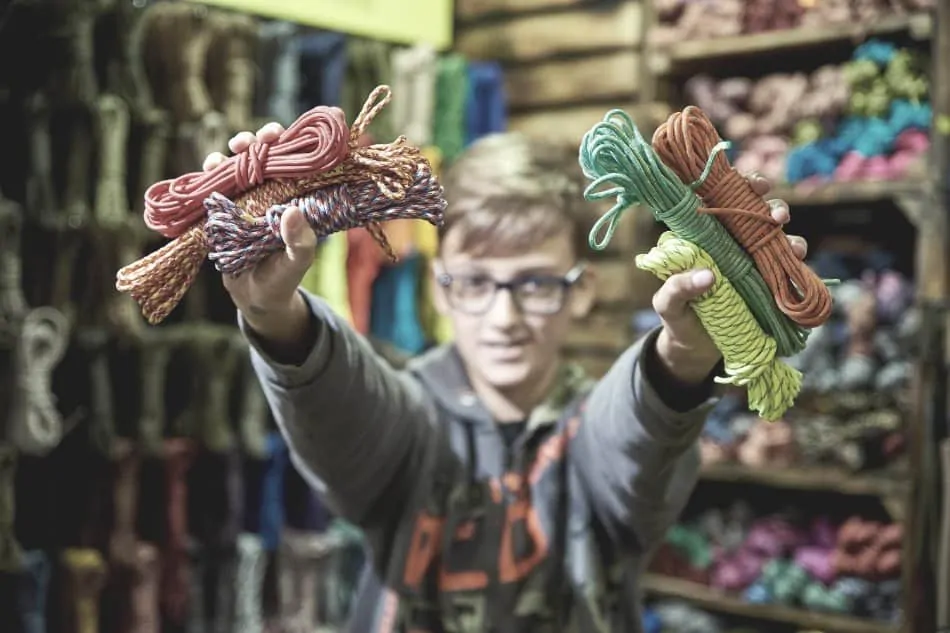
Materials
These days, paracord comes in two materials: polyester and nylon. When it comes to the overall experience, most people can’t tell the difference between the two, but it may be important for you to at least be able to recognize the feel of each. Both of these have the same tensile strength, which means that it will take 550 pounds of force to break both nylon and polyester cords.
As a rule, former military people have a tendency to prefer nylon due to the fact that it just feels a little more natural. Polyester has been known to have a plastic feel to it, which puts some people off. Fortunately, both of these are flexible, but if you need a higher degree of flexibility, nylon edges out polyester by a few points. For this reason, if you’re going to be knotting your paracord, err on the side of nylon.
Paracord has also become popular due to the fact that the nylon and polyester varieties will not rot or mildew, so it’s reliable, even when it hasn’t been used in years or decades. There’s also a market for World War II-era paracord, which is a testament to the quality of the first generation of the nylon kernmantle rope.
History of the Paracord
One of the reasons that the cord has the “para” prefix in it is because it actually originates as a cord used in parachute suspension lines. This use dates all the way back to the Second World War, and the various applications for the rope started to develop during this time thanks to ingenious G.I. servicemen.
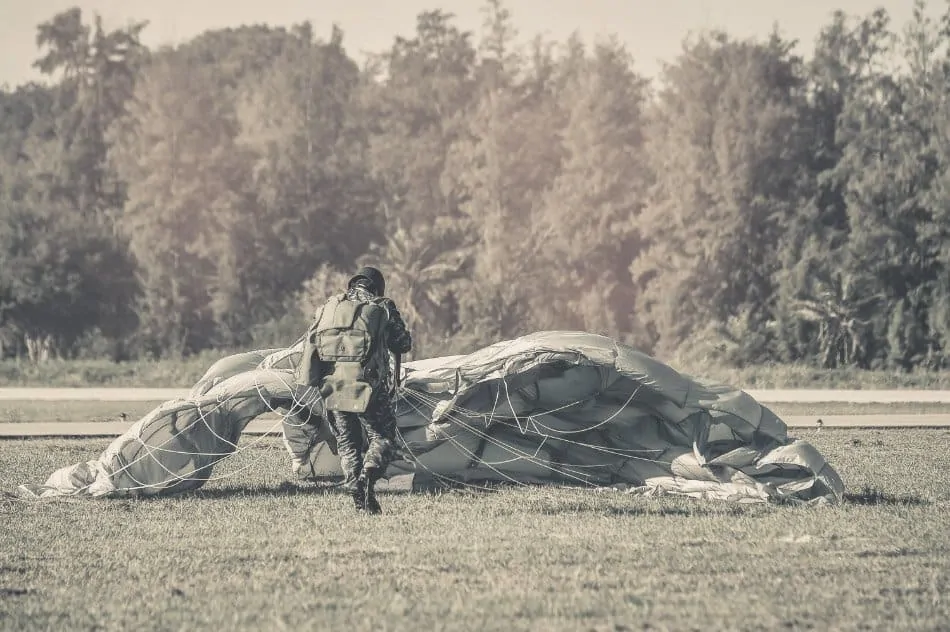
These servicemen brought the cord to the military theaters that they served in since they often had to cut the lengths of cord away when they landed. These lengths were used to replace boot laces, measure out distances, secure tarps, and these even serves as tourniquets for injured soldiers.
After the war was over, it was clear that paracord was useful in a variety of ways, and in the ensuing years, many more uses have been developed for this versatile material. In fact, during the period when astronauts were sent to repair the Hubble Space Telescope, paracord was notably used.
Paracord worked its way into the popular consciousness when it was found in military surplus outlets. Today, this versatile and powerful material has even been incorporated into the survivalist teachings of the Boy and Girl Scouts.
Why is the Paracord so Special
So, why not just use standard rope? Surely there are other rope types that can be versatile, right? Well, as you can see based on the paracord types, paracord is known for its impressive tensile strength as well as for its unique weight-to-length ratio.
Simply put, the stuff is very lightweight, yet it still can manage hundreds of pounds without breaking. In fact, it was the fact that many servicemen were saved by this material during botched parachute landings that earned the cord its reputation of dependability.
Also, you can put it just about anywhere. These days, an increasingly dense amount of paracord options are appearing at craft stores, so it’s very easy to find it. Once you have your cord, it can be woven into dog leashes, phone cases, phone wire protectors, bracelets, and even articles of clothing. Each of these uses are supplemented by the fact that the cord can still be used as a means to keep your surviving, even in the worst situations.

Also, this cord is known for the fact that it’s very extendable; when you need more paracord, you can simply pull the inner strands apart to more than double the length of cord. Also, for an item like a bracelet, the cord can be woven so that it’s minimal, but when unwound, you can sometimes have more than 20 feet of paracord that can be used in a variety of circumstances.
It’s definitely crucial that you understand that even the stronger paracord shouldn’t be used as a replacement for items like a climbing rope. This is due to the fact that falling adds extra force that can easily exceed the 550-pound tensile strength, so using it in applications like that would be problematic at the very least. For other uses where the upward limit of the breaking strength isn’t tested, the cord can definitely be relied upon.
Excellent paracord also has a 30 percent elongation at minimum, which is how far a length of rope can be stretched and still return to its original size. All types of paracord will have this minimum elongation rating. As a rule, nylon paracord has a slightly higher elongation rating than polyester.
Effectively, it’s also important to remember that paracord has uses outside of survival situations. You can make everyday items like phone cases and watchbands out of the material. These tend to be very strong, and when a survival event does happen, those sporting these items will find that they will be much more prepared since they will have this threaded rope at their disposal.
The Types of Paracord Explained
In addition to standard, professional-grade 550 paracord, which is considered Type III, there are a few other varieties to consider. These include:
Type I
This is the weakest paracord, and it only has a breaking strength of 95 pounds. That being said, it’s also relatively lightweight.
Type IA
Like Type I, this cord isn’t incredibly strong; it only has a tensile strength that’ll accommodate about 100 pounds. When it comes to length per pound, this cord stands out because you get about 1050 feet per pound of cord.
Type II
The breaking strength increases significantly with type II. This cord can manage about 400 pounds of force without breaking and has a length per pound of cord of about 265 feet.
Type IIA
This has a slightly lower breaking strength and can only manage about 225 pounds of pressure without breaking. This cord is also relatively lightweight so that you can expect about 225 feet of cord per pound.
Type IV
This stuff is strong. With Type IV, you won’t have to worry about snapping because it can manage up to 750 pounds of force without breaking. With that said, it’s relatively heavy, so expect only about 165 feet of cord per pound.
550 Paracord
So, what about 550 paracord? Well, as mentioned, this paracord, which is considered the gold standard and the most common, has a tensile strength that will allow it to manage items with weights of up to 550 pounds. In addition, it’s also reasonably lightweight; Type III cord, when weighed, will grant you 225 feet of the material per pound.
Don’t Just Buy Any Old Paracord!
So, it may be obvious now that paracord can be a major boon when you’re out in the wild, but doesn’t that mean that you should purchase the first paracord you see? No! Put simply, not every paracord is built the same, which is why WWII-era paracord is so often sought after. Ideally, if you really want a dependable product, seek out paracord that has a military grade design; this cord has the highest amount of threads, and you can expect reliable strength.
In fact, for this type of paracord, which is often called mil-spec, you can expect at least seven strands on the inner layer. These strands will be very tough to break because they’ll be comprised of at least three nylon yarns, which are tough by themselves. As a rule, you can trust mil-spec cord, and if you don’t have time to test that professional, non-military cord is up to snuff, just seek out the military-grade stuff to be sure that you’ll be getting quality.
Still, there are tons of paracord products sold on the market that are relatively untested, so it’s just a good idea to pay attention to what you’re buying. In fact, it’s a good idea to buy a small portion of the paracord and test it under stress to determine if it’s worth using on your next trip.

For example, purchasing some cord from online sellers like eBay may net you seven-strand paracord that may seem to be high-quality. On closer inspection, you may notice that the cord will have six standard-sized strands and a seventh thin strand. There are scams like this out there, and while this cord may have decent tensile strength, it just won’t compare to the military-grade rope that most people think of when they want paracord.
When it comes to paracord, quality really does trump quantity; you can sometimes find good quality paracord at good prices, but don’t be afraid to spend a little extra for the good stuff. Remember, this can save your life, so spending a couple of extra bucks for the mil-spec cord can be well worth the expense.
How to Test Your Paracord’s Quality
So, now that you know that it’s not a good idea to just purchase any random paracord, you still may be wondering if the paracord you have on hand is up to snuff. Fortunately, there are a few ways for you to test its quality. For the most part, while polyester will do, nylon is the type of cord that’s considered to be mil-spec. The tests outlined here are designed explicitly for nylon.
The String Count
Good paracord will have anywhere between seven and nine strands within the outer layer. For this reason, if you discover less than this, the cord will be of reduced quality. Additionally, the mil-spec cord will also usually have strands that are made up of three yarns, which really is a prime indicator of strength and reliability. Cords that have two strands will also provide a good level of strength, but it’s just not considered optimal by survivalists. If your paracord has a single yarn per strand, then it just won’t be reliable.
The Bonding Test
This is an excellent method for determining the actual physical construction of your strands. With this test, you’ll be burning two ends of the paracord. This will melt the paracord ends so that you can bond them together quickly. Melted paracord will typically bond very strongly, and you can even use dowels to make sure that the connection is smooth and robust.
In any case, nylon will easily bond with nylon using this method, and polyester will do the same. Unfortunately, nylon will not bond with polyester and vice versa, so if you notice that there isn’t a firm bond, this means that the manufacturer created a hybrid product that you won’t be able to depend on. Remember, one of the chief advantages of paracord is the fact that you can make much larger lines out of shorter ones, and when it doesn’t have this innate ability, that’s a fairly sizeable problem.
The Strand Color
If you’re purchasing cordage that makes the claim that it’s mil-spec, you can test it by taking a look at the strands. Authentic military-grade paracord usually has at least one colored strand, which is an indicator of a specific manufacturer that the military uses to product these strands. For this reason, if you cut your cord open and notice that all strands are a uniform color, then most likely it’s a knock-off mil-spec product.
The Labeling
Finally, one of the easiest ways to detect the pedigree of your cord is to check the specification number. The real mil-spec 550 cord will be called C-5040H Type III, so if it just says Type III or simply mil-spec, then most likely it isn’t the real stuff.
How Best to Store Your Paracord to Avoid it Degrading
As mentioned previously, rot, mildew, or mold won’t be able to damage your paracord, but that doesn’t mean that it won’t degrade over time. In fact, ultraviolet light can do some extensive damage to your paracord over long periods of exposure. For this reason, ideally, you won’t want to leave your cord out in the elements since sunlight will cause gradual damage to it.
To keep your cord in tip-top shape, opt to store it in a dark place so that it will be ready for you when you need it. An excellent place to store some lengths of paracord would be in a good bug out bag since manufacturers have a tendency to leave you some extra space. Additionally, in a bag like this, you’ll know that you’ll have one extra survival resource just in case things get hairy.
Additionally, it couldn’t hurt to make sure that your paracord is in a nice and dry location as well. Mildew won’t form on the threads, but moisture can cause its own type of damage if given enough time.
Finally, if you’re using your paracord a lot over the years, check it from time to time for wear and tear. Paracord isn’t invulnerable; abrasions happen, so check the full length after each use and before you depend on it. Abrasions can weaken even mil-spec cord, so make this part of your paracord checklist whenever you’re about to head out into the wild.
What Can a Paracord be Used For?
Now that you have a good introduction to the world of parachute cord, we’re going to show you some of the practical applications of this versatile, rope material. Remember, paracord is useful, but it may take some practice for you to really make the most of the material. Still, let’s take a look at some of the more survival-friendly uses:
Lanyard for Key Fobs
With a good cobra weave, you can make a great-looking keychain that can be relied upon should you need a length of rope. In fact, with about six to 13 feet of paracord, you can easily make a keychain-sized lanyard. To do this, you’ll need to stitch the cord together in a cobra style, but once it’s done, you’ll simply have to bond the ends together with a lighter.
Emergency Survival Paracord Bracelet
One of the best aspects of a paracord bracelet is that it will be bracelet-sized on your wrist while still ensuring that you’ll have meters of paracord available. There are several methods out there that you can use to weave a great-looking bracelet that also will provide you with an item that you can use in a survival situation.
Making Shelters
There are several ways to make a shelter using paracord. For example, with just two large branches and a tarp, you can create a raised sleeping surface that will keep your dry, even if you’re in a moist rainforest. In fact, a paracord when combined with a tarp and some rocks for weight will make an excellent shelter in dryer climates; just rope attach the paracord around two trees and hang the tarp over it.
Snare for Hunting Small Animals
With just a few sticks and some paracord, you can easily capture a small animal like a rabbit or squirrel. For this to work, you’ll have to notch the stick so that the thread from your paracord can easily be attached and locked into place.
Once you’ve made this knot and tied it firmly to the stick, you can make a slipknot at the other end that’s about a fist’s width in size. Once you’ve created a slipknot, hammer the stick into the ground, use small sticks to support the snare hook, and check your trap frequently.
Inner Strands
Paracord stands out because you can break it down and reconfigure the inner strands so that they can be used in a variety of ways. These strands are invariably tough because they are made of polyester or nylon, and they are much thinner so that they can be used for activities that require a little more nuance than would be possible with the full-sized cord.
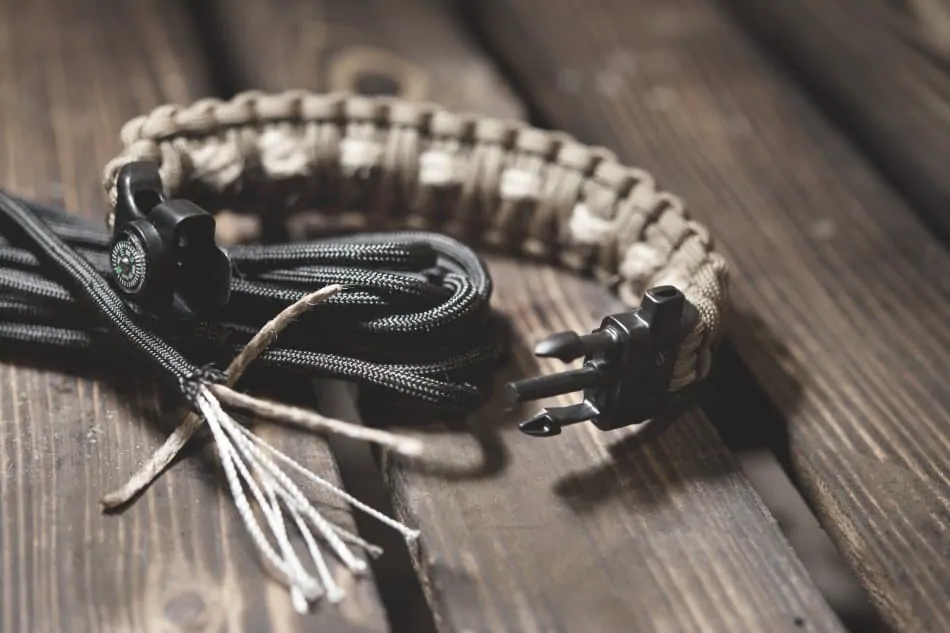
Here are a few fine-tuned applications:
Flossing
Dental hygiene is essential, even when you’re out there in the wild trying to survive. For this reason, you can quickly make some makeshift dental floss out of paracord. To do this, simply cut away one of the strands and fully unwind it until a serviceable piece of floss is revealed. The single yarns inside of paracord are very skinny, so it shouldn’t be a problem working them between your teeth so that you can remove tartar buildup.
Suturing
The very thin yarns inside the core of each strand of paracord are very tough thanks to an all-nylon or all-polyester construction. When you’re injured, these strands are durable enough to close a wound and form stitches or a suture. You’ll first need a needle that has been sterilized with alcohol or fire, but once it’s ready, form the needle into a “J” shape, and thread the wound closed. Just make sure not to pull too tight and break the paracord thread.
Fishing Line
In addition to being great for catching small game, paracord is easily strong enough to serve as a fishing line. In addition to this, you can also use these singular threads to make a good fish trap so that you can have a good source of food.
Sewing
Minute rips in your clothing can be very problematic, especially if nighttime weather falls below freezing. Fortunately, you can sew ripped clothing together using paracord threads. You can even stitch multiple pieces of clothing together to form a more effective barrier against the cold. These nylon threads are much stronger than standard string, and using them this way can make a significant difference insofar as your survival chances.
Other Practical Applications
Finally, let’s take a look at some of the less vital uses for paracord. These applications are typically multi-purpose ways of incorporating the cord into your survival routine. As we mentioned before, paracord is versatile, and it can be reasonably indistinguishable from other forms of nylon material if you know how to apply it. Here are 16 unique paracord ideas that can help you stay prepared:
Shoe Laces and Belts
Even mil-spec paracord is the perfect size to be used as a shoelace, so feel free to use it this way; you can even re-bond the unused portion.
To create a shoe or bootlace, you simply need to singe the end of your paracord so that it forms a hard edge that’s similar to the aglets of standard laces. It does take a bit of finesse; you’ll have to squeeze the singed portion so that it compresses correctly, but once you’re done, you won’t notice the difference between your paracord laces and your standard ones.
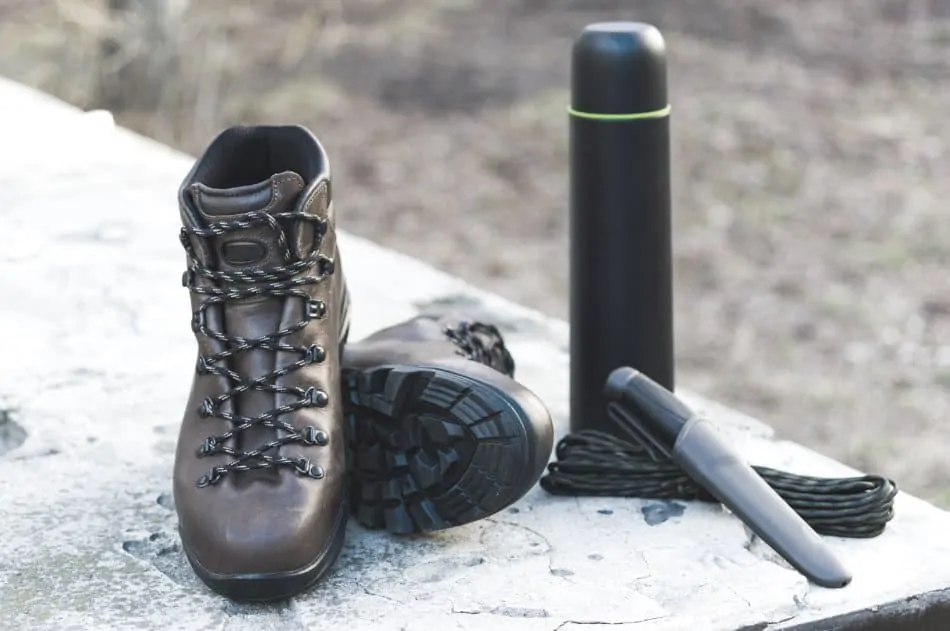
Paracord belts, on the other hand, can be similar to paracord bracelets because you may need to knot them to get the full experience. Having said that, once they are complete, it’s easy to add a buckle, and a paracord belt will readily provide more than 50 feet of paracord that you can use throughout a survival situation.
Handles
Paracord grab handles offer another advantage that extends past the fact that they provide you with a ready source of cordage; they also can make things easier to carry. This is due to the fact that paracord is made of a softer material than is available on some items.
Additionally, you can add these handles to survival knives, which will improve the grip and make it harder for the blade to slip out of your hands. Handles will take a bit of knotting to complete, but once you’ve added a handle to the desired object, the benefits will be two-fold.
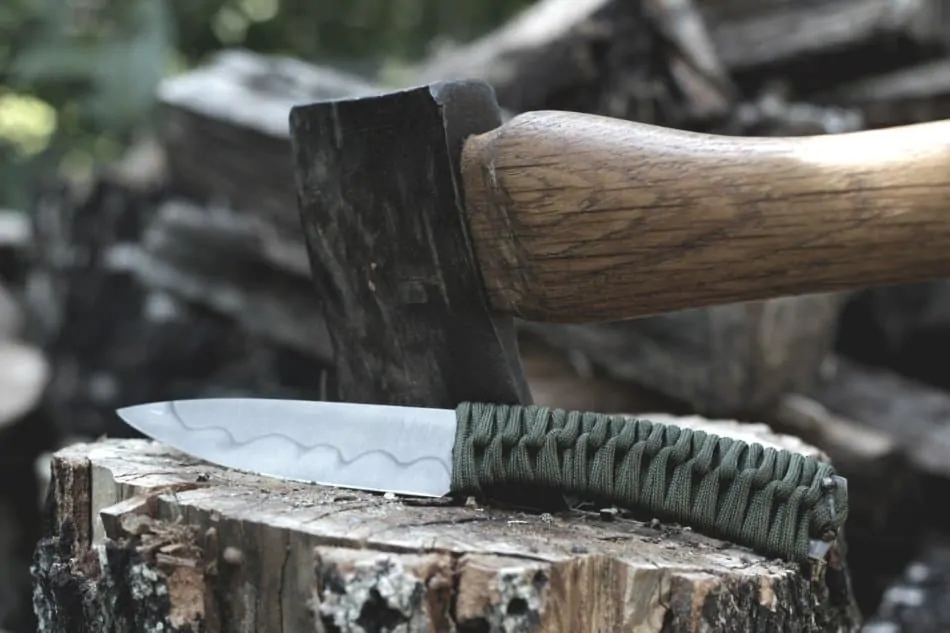
Bow Drill and Line
Making a fire can be absolutely crucial in a survival situation, and crafting a bow drill can make this process much simpler. While it can be easy to find the cedar, cottonwood, or juniper that you need for a good bow drill, finding the right line to start a fire can be tough. Fortunately, the single nylon threads found in a good piece of mil-spec paracord can efficiently complete this task.
Washing Line for Clothes
This one is relatively simple; you just use your length of cordage to dry wet clothes. Wet clothes can cause significant issues, especially when you’re trying to stay warm, so merely running a full measure of unmodified paracord between two trees can work wonders. Many understand the frustration that comes from a clothing line that snaps, and since paracord is so strong, this is a problem you won’t have to worry about.
Net for Fishing or Hammock
With enough paracord, you can easily create a workable fish trap or even a sleeping surface that’s elevated so that you can avoid things like small animals or insects. Both of these will require that you weave the intact paracord into a shape that can support a concerted amount of pressure, but since the cordage is so strong, it excels in this regard.
For a full-fledged hammock, you’ll need at least 48 feet of the paracord, but once completed, it’ll support a lot of weight.
Tripwire
If you’re trying to hunt slightly larger game, a tripwire can really make a significant difference, especially if you have setup time. To make a trap like this, you’ll need the woven paracord strands, which are thin enough that most quarry won’t notice them in the brush.
To create a tripwire, you’ll need to notch a couple of nearby trees so that the wire won’t move up or down when hit, which will keep the line nice and taut. Paracord’s tensile strength is what makes this kind of trap so dependable – even at a full sprint, most animals won’t be able to just tear through the tripwire without at least stumbling.
A Bow Stringer
Stringing a bow can certainly take a lot of physical strength and endurance, especially if you’re restringing a recurve or long bow. While some opt to restring using their own body as a fulcrum, this can lead to injury. Fortunately, you can pass some paracord through some strips of leather to restring your bow easily. You’ll just have to create a loop with the leather by tying the paracord together using an overhand loop knot, and you’ll have your bow stringer.
Emergency Tow Rope
Believe it or not, paracord is strong enough to pull your vehicle out of a ditch! This will require several wraps of paracord so that you can create the tensile strength needed to tow your vehicle out of its precarious circumstance. In addition, you’ll need a quality carabiner clip to attach to the tow hook of the vehicle, but once it’s connected, you and another car should easily be able to pull yourself out of the muck.
Improvised Lantern Fuse
Paracord burns very well, and as a result, it can be used as an emergency lamp fuse for an oil lantern. This is particularly useful when your cotton lamp fuse has burned up. While this might not be quite last as long as a traditional fuse, it can certainly provide you with enough light to get by.
Tourniquet in an Emergency
Injuries happen, especially when you’re in an uncontrolled environment during a survival situation. If you cut yourself or even sustain a partial or full amputation, a piece of paracord can stop the bleeding and prevent catastrophe. First, wrap the injured limb with the paracord about two inches closer to the body than the actual injury.
Next, grab more paracord, and using an overhand knot, tie it securely and place a torsion device atop this same knot. Tie another overhand knot over the torsion device so that it’s secured in place. Finally, twist this torsion device so that the bleeding stops.
A Sling for Injury
Keeping injured arms immobile is the best way to ensure proper healing. To create a sling, simply use a length of fabric, leather, or other tough material, and wrap it underneath the injured arm. Next, wrap the paracord around the wrist and wrap it around the neck. Finally, tie the two ends together or bond them if you have a fire source.
Guy Lines for a Tent
Guy lines can help ensure that your tent is stable and secure, so using tough paracord can really benefit the camping experience. In a pinch, paracord can be used as a guy line for your tent. Simply wrap the paracord around your stake and tie it a few times around itself.
With the right knot, the guy line will even be adjustable, and since you’re using paracord, it won’t slip, and the knot won’t come loose.
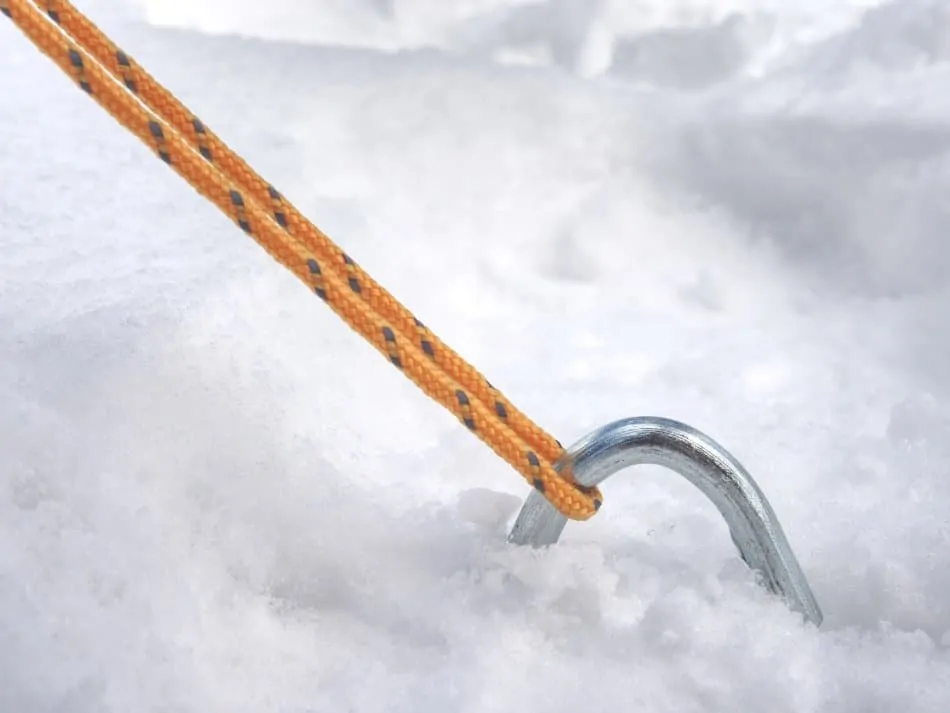
Self-Defense Monkey Fist
The origin of the monkey fist knot started out with sailors who would use monkey fist-tied ropes to make passing length of ropes easier. In the end, this practice fell out of favor because of how dense these balls of rope were.
As a result, the monkey fist has becomes something of a survivalists go-to for paracord self-defense. To do this, you’ll need a jig that has four spokes and a solid core for your monkey fist flail. Wrap the core horizontally six times. Afterward, wrap it another six times vertically. Repeat this process until the core is completely covered.
Finish up by stringing the cord six times underneath the two outer wraps. Remove the paracord from the jig and tighten it up by pulling the strings until they are all semi-tight.
If you don’t have a jig you’ll want to watch this video.
Handcuffs?
It shouldn’t be too surprising that paracord is excellent for bonding someone securely. This is due to the fact that it has such a high tensile strength, but you’ll have to tie the right knots if you want to be sure that they are tied safely. To do this, you’ll need to tie the cordage using the boatswain’s handcuff style.
You’ll need to tie a prusik knot at the center, which is a knot used by climbers. Finally, loop the two ends back under the loose knot and tighten the center. Anyone caught in these loops will pull the knot tighter if they struggle.
Zipper Pulls
To create a zipper pull that can be incorporated into multiple pieces of survival gear like bug out bags and jackets, it only takes about two and a half to five feet of paracord. These zipper pulls just require a basic cobra weave, and once they are done, they make pulling larger zippers much easier.
Animal Collar and Leash
To create a leash or collar for your pet you just need to make sure you have the correct length paracord and in the same manner as a survival bracelet you can construct a bit of bling for your animal.

Final Thoughts
Paracord is perfect for anyone that’s looking to bring a tough, versatile, and lightweight style of cordage with them wherever they go. This material can be taken anywhere, and in many cases, it incorporates into your daily gear, so you may even forget it’s even there. In any situation, this material can be a lifesaver, which is why we created this guide.
We hope that it helps you understand a little more about this unique cord type, and we hope that it gives you some survival ideas as well.
I’m Nebojša, a seasoned digital marketing professional with over 15 years of experience. My writing covers a diverse range of topics, from technology and gaming to app development and automobiles, all while delving into the intricacies of SEO optimization. Beyond the digital realm, I find solace in nature, inherited from my father’s love for the outdoors. His passion for hunting has influenced me, adding another layer to my appreciation for the natural world.